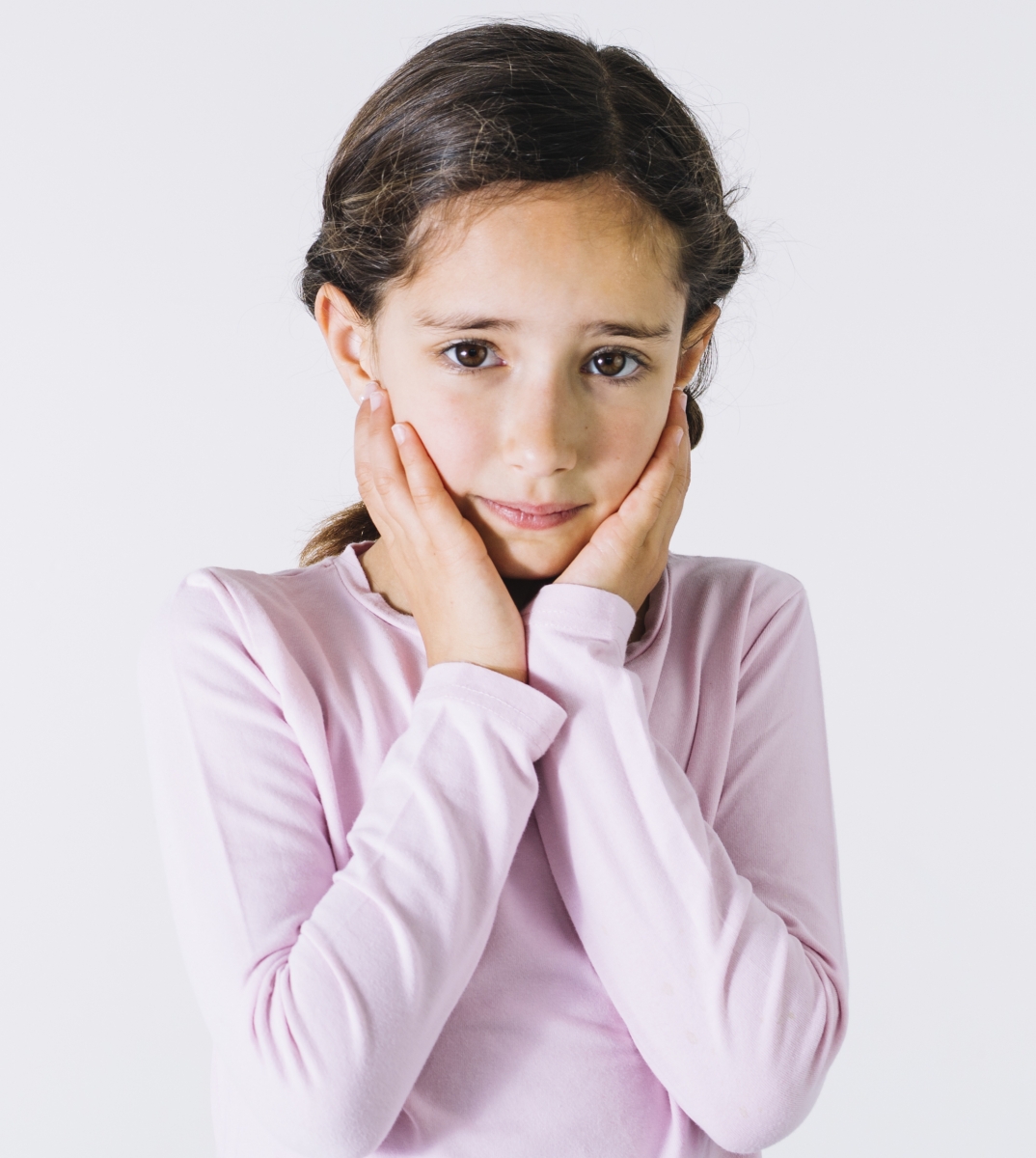 The following lesson plan nurtures the Secure & Calm Heart-Mind quality by helping students build capacity to regulate their nervous systems. It begins by demystifying what goes on in brain and body when we are feeling stressed–when our fight-flight-freeze response is triggered–and then guides students through an activity that helps "turn off" the stress response, dial back the production of stress hormones such as osteocalcin, and connect with a deep sense of peace within. In this way, this lesson aspires to enhance students' ability to find calm within themselves that is, both metaphorically and physiologically speaking, bone-deep.
The following lesson plan nurtures the Secure & Calm Heart-Mind quality by helping students build capacity to regulate their nervous systems. It begins by demystifying what goes on in brain and body when we are feeling stressed–when our fight-flight-freeze response is triggered–and then guides students through an activity that helps "turn off" the stress response, dial back the production of stress hormones such as osteocalcin, and connect with a deep sense of peace within. In this way, this lesson aspires to enhance students' ability to find calm within themselves that is, both metaphorically and physiologically speaking, bone-deep.
In a rather peculiar turn of speech, we often say that we feel things in our bones. Be it a chill in the air, a good omen, or something foreboding to come, we might say that we "feel it in our bones" to communicate an intuitive sense of knowing, the source of which lies deep within ourselves.
But have you ever said that you feel calm in your bones?
If you haven't, this new scientific discovery will give you good reason to start! Researchers from the United States[1] have identified that the skeleton (yes, our bones!) plays an essential role in the acute stress response. Osteocalcin, a hormone, is secreted by our bones in response to sudden stressors, and is responsible for jump-starting our body's fight-flight-freeze response[2] (think: that heart pounding, stomach turning, heavy breathing, palms sweating feeling). This hormone works by inhibiting (turning off) our rest-and-digest nervous system, thus activating our sympathetic nervous system and allowing our fight-flight-freeze response to run wild.
This means that our bones play an important role in regulating stress and calm within the body. When we feel calm, our bones are not stimulated to release osteocalcin, and our rest-and-digest nervous system can stay "turned on". So while we may not be aware of it, we can feel calm - and even BE calm - in our bones.
Lesson Plan: Stress, calm, and your peaceful place (45 min)
This lesson plan introduces students in grades 4 - 7 to the fight-flight-freeze response through educational videos produced by Anxiety Canada. It then guides students through a visualization exercise that helps them "turn off" the stress response by connecting to a sense of peace and calm that they can return to at any time. It closes with a brief creative writing or drawing activity to help students process what they have learned and felt during this lesson. This lesson supports the Personal Awareness and Responsibility Core Competency of the New BC Curriculum, and builds capacity for the Self-Regulating and Well-Being facets of this competency.
Part 1- Learning about stress in body and mind (10 min)
- Partner turn and listen: Invite students to share with a partner what they think stress means, and how it affects the body and mind. (3 min)
- Activate thinking: Introduce your class to the acute stress response - often referred to as the fight-flight-freeze response–through one of these short videos produced by Anxiety Canada: Fight-Flight-Freeze: A Guide to Anxiety for Kids or Fight-Flight-Freeze: Anxiety Explained for Teens, whichever you feel is most suited to your grade level. (5 min)
- Partner turn and listen: What new things about stress did you learn from the video? Share at least 1 new learning. (2 min)
Part 2 - Your Peaceful Place (20 min)

- Popcorn sharing: Invite students to share one word that comes to mind when they think about “calm”. They can speak whenever someone else is not speaking – no hands-up required. This way of sharing encourages listening before speaking. (5 min)
- Guided imagery activity: Tell the class that you will now be sharing a guided imagery or visualization about a peaceful place[3] that anyone can visit at any time. Invite students to find a comfortable seated position in a chair or on the floor. Let students know it is ok to have eyes open or closed, to move in their seat (so long as they are not disrupting others) or be still, and to listen to the visualization or just sit quietly. (15 min)
Part 3 – Creative Reflection (15 min)
- Journaling/drawing activity: Invite students to go immediately into this creative activity following the guided imagery exercise, preferably without talking. Invite them to recall their peaceful place and write about it, draw (or paint, sketch, doodle, etc) a picture, or both. This is a free-form, creative, personal expression activity. Students may wish to write or draw in a concrete or abstract way–it is truly up to them. Students may wish to keep their writing/drawing private. This wish should be respected, and any grading should be given for participation only–for simply showing up. (10 min)
- Popcorn sharing: Invite students to say one word that describes their peaceful place. Again, in this kind of sharing, students do not need to raise their hand; rather, through careful listening they are able to speak when no one else is already speaking. (5 min)
Photo of girl from Freepik.com
Researchers studied the role of osteocalcin in mice and humans, and found that a lack of it prevented the acute stress response from taking place, and that high-dose injections of it could initiate the fight-flight-freeze response - even in the absense of external stressors. These findings led researchers to conclude that bone, not adrenaline, may drive the fight or flight response.
To begin, find a comfortable place to sit. You may wish to close your eyes, or leave them open. In this exercise, you are invited to use your imagination to explore a place in your mind where you feel calm and peaceful. You can stop listening to this exercise at any time, so long as you remain seated and are respectful of other students who may still wish to listen.
Think of a place that feels peaceful and calm to you. It can be somewhere that you have been before, or that you have seen in a movie or read about in a book, or even somewhere that exists only in your imagination. Maybe it’s your bedroom, or a friend’s house, or a beach, or a mountain, or Disneyland, or a world made of clouds, an underwater palace, or even the surface of the moon.
Now, imagine that you are travelling to your peaceful place. How will you get there? Can you walk or run there? Fly there in an airplane or hot-air balloon? Float there on a cloud? Take a rocket-ship or submarine?
However you choose to travel there, picture yourself getting closer and closer to your peaceful place. You can see it in the distance, and it is getting larger and clearer as you travel nearer. What do you notice first? Is there a particular colour, or shape, or smell that tells you that you are almost there? Does the air feel warm or cold? Is it sunny, or raining, or maybe even snowing?
Now you have finally arrived in your peaceful place. It is right in front of you, and you are free to enter it however you please. How will you enter it? Is there a golden gate, or a winding staircase, a giant slide, or a big, wooden door that is just the tiniest bit open?
Always remember that in your peaceful place you are completely free to be yourself. You can go anywhere and do anything.
Take a few minutes to explore your peaceful place. Here, you can walk or run or skip or swim or even fly to get around – its up to you!
What do you see? Are the colours bright or soft? Are you surrounded by buildings or nature? Are there other people there – people you know and care about, like family or friends, or maybe people you have never met before who live in your peaceful place and are there to help you feel calm and peaceful too?
Are there animals around? A puppy to cuddle or a kitten to play with? Maybe there is an animal, real or imaginary, who will be your companion or guide as you explore your peaceful place.
What does your peaceful place smell like? Do you smell chocolate-cookies, hot out of the oven, or a freshly-cut Christmas tree? Sweet blooming flowers or salty sea air?
Now listen for a moment to the sounds in your peaceful place. Are there voices? Singing? Music? Nature sounds? Maybe it is silent. There is no right or wrong way for your peaceful place to be.
Is there anything to eat or drink in your peaceful place? If you wish, you may want sample some of the local cuisine. Maybe there is a bowl of your favourite chicken soup waiting for you on a table, or a birthday cake, or an ice cold glass or water, or an imaginary creation all your own. Take a moment to imagine how the food in your peaceful place tastes.
Take a few more minutes to visit any part of your peaceful place you haven’t yet seen, or spend more time in part of it that feels especially nice. [give free time, maybe 2-3 min, in silence]
It will soon be time to leave your peaceful place to return to the present, in your body, in this room. You may wish to say goodbye to any people you have met, or any friends who you have made. You may want to take one last look around, for now, and note any details you want to remember.
Even though this visit to your peaceful place is ending, remember that this is YOUR peaceful place, and you can return here any time you want to. You can come back here when you feel worried or scared, or bored, or when you’re having a hard time falling asleep, or really any time at all. No one even has to know that you are visiting your peaceful place, as it is a safe place within that is purely your own.
It is time to return to the present now, in your body, in this room. Notice the way your body feels, sitting in the chair or on the ground. Does it feel heavy? Warm? Relaxed? Energized? What about your breathing? Is it fast or slow, shallow or deep, or somewhere in between? What about your heart? How did your heart feel when you were in your peaceful place? Did it feel happy, safe, full, or loved? What feelings are you bringing back with you as you return to your body, in this room?
You may want to wiggle your fingers and toes to wake them up. Shrug your shoulders roll them forward and back. Move in any way that feels good to you – like rocking back and forth or wiggling all over - being mindful not to bump into others. Slowly, open your eyes and return to the room.
Researchers from Columbia University Irving Medical Center, New York, led a team of scientists investigating the role of the skeleton in the acute stress response. They hypothesized that bone evolved to allow vertebrates to escape danger in the wild. Their study's findings, which documented the role of osteocalcin in regulation of the acute stress response, support this hypothesis.